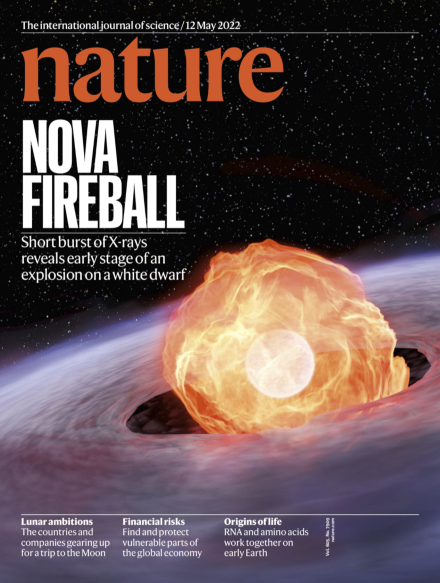Novae are caused by runaway thermonuclear burning in the hydrogen-rich envelopes of accreting white dwarfs, which leads to a rapid expansion of the envelope and the ejection of most of its mass1,2. Theory has predicted the existence of a ‘fireball’ phase following directly on from the runaway fusion, which should be observable as a short, bright and soft X-ray flash before the nova becomes visible in the optical3–5. Here we report observations of a bright and soft X-ray flash associated with the classical Galactic nova YZ Reticuli 11 h before its 9 mag optical brightening. No X-ray source was detected 4 h before and after the event, constraining the duration of the flash to shorter than 8 h. In agreement with theoretical predictions4,6–8, the source’s spectral shape is consistent with a black-body of 3.27+0.11−0.33 × 105 K (28.2+0.9−2.8 eV), or a white dwarf atmosphere, radiating at the Eddington luminosity, with a photosphere that is only slightly larger than a typical white dwarf.
- Ole König
- Jörn Wilms
- Klaus Werner

